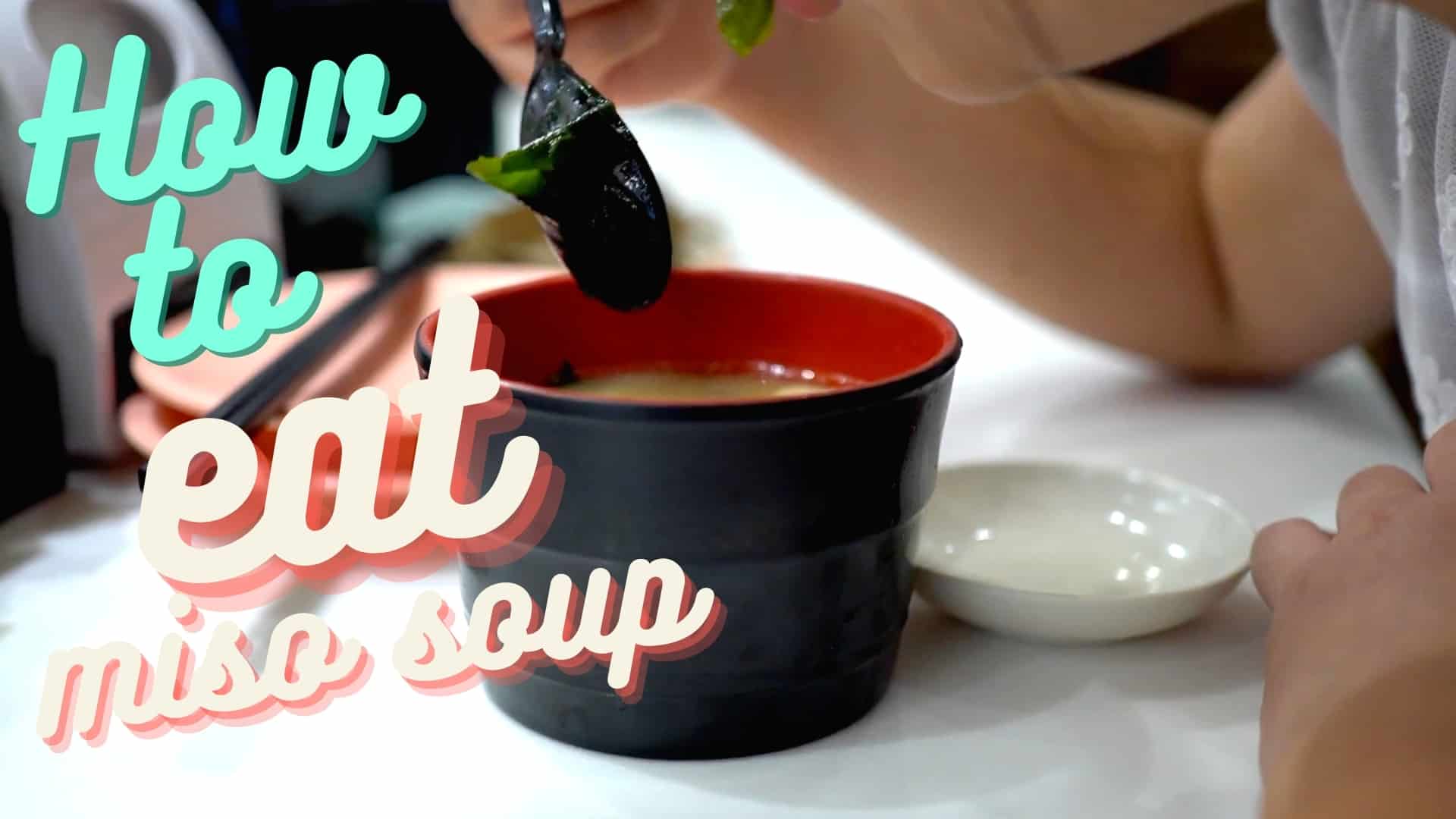How to properly eat miso soup: spoon and chopsticks
Today i want to look at how to eat miso soup because you’re probably doing it wrong, at least maybe you’re doing it wrong in some situations.
Because there are a few ways that you can eat miso soup:


Check out our new cookbook
Bitemybun's family recipes with complete meal planner and recipe guide.
Try it out for free with Kindle Unlimited:
Read for freeIn this post we'll cover:
No. 1 eat miso soup to settle the stomach
And the first way that you’re probably most familiar with is at a sushi restaurant.
You can order the miso soup from the menu oftentimes, but the main thing to remember is that the miso soup at a sushi restaurant is intended to settle the stomach.
So you should only eat the miso soup after you’ve finished all of your other courses. Eat the miso soup as the last course.
Usually, it won’t have a lot of ingredients in it. It’s just a base miso soup with maybe some wakame in it.
Do you need a spoon for miso soup?
Now you don’t need a spoon when eating miso soup. You can just drink it by holding it like a cup.
No. 2 miso soup as a side with a full course meal
The second way is as a side with a full course meal.
Usually, with a full course meal, the miso soup is added to it as a side so you’ll probably have three dishes and eating it in a triangle is the right way to eat it.
Triangle eating
So just a little sip of your miso and then some of the other parts of your meal like maybe a little bit of rice and then perhaps a little bit of the meat or other type of dish that goes with it.
Then have some sip of your miso soup again and then part of the other types of dishes. So this is really different from eating Western-style foods but this is the way to eat a full course Japanese dinner.
Use your chopsticks to eat the wakame from the miso soup.
No. 3 full miso breakfast or lunch
The third way is to eat miso soup like a hearty breakfast or maybe lunch.
Then you’ll eat it alongside some rice or maybe noodles if you’d like. The miso soup will normally be more filled with other ingredients then if you eat it as a side to a full course meal.
And because you have all these excess ingredients in the soup it’s a more full meal soup with larger pieces of wakame and tofu in it.
Check out the vegan miso soup lunch I made here, it’s pretty easy!
Eat large parts with your chopsticks
Now you can eat the larger bits in the miso soup with your chopsticks.
Sip a little bit of soup and then eat wakame and other hard ingredients that are in there. For example, you could have some meat in there or you could even have some crab in there.
There are all kinds of miso soup tastes that you can try out.
Also check out hashimaki, which comes ready made ON chopsticks (yes, really!)
Conclusion
So, this was an introduction to eating miso soup. I hope this helped you in understanding more about how to eat miso soup.
You probably didn’t do it wrong but maybe not right at the right time for the right type of meal.
Also read: how to make a delicious miso soup from an instant miso package
It makes a really easy and a delicious breakfast!
Check out our new cookbook
Bitemybun's family recipes with complete meal planner and recipe guide.
Try it out for free with Kindle Unlimited:
Read for freeJoost Nusselder, the founder of Bite My Bun is a content marketer, dad and loves trying out new food with Japanese food at the heart of his passion, and together with his team he's been creating in-depth blog articles since 2016 to help loyal readers with recipes and cooking tips.
